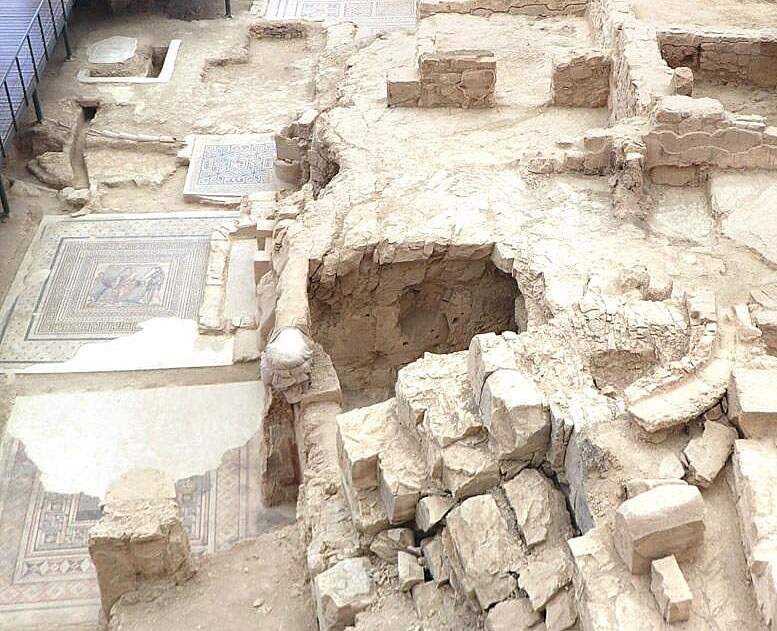Turkey, two rock chambers at Zeugma in the House of the Muses come back to light
During excavation work in the ancient city of Zeugma, in what is now Gaziantep province in Turkey, two rock chambers have been discovered in the so-called House of the Muses, for its beautiful floor mosaics.
The excavations began in 2005, and Professor Kutalmis Görkay of Ankara University, who is directing the work, explained that both chambers were found after digging sixteen meters at the fill soil in the House of the Muses: "We dug sixteen meters of soil, and after spotting something, we decided to move the excavations in this direction. We started digging inside the rock chambers and the work is still going on; we have emptied them of the fill dirt. For now we will provide protection and reinforcement of these rooms: in fact, we have noticed dangerous cracks in the ceilings. At a later stage we will open these rooms to visitors, taking protective measures and ensuring the safety of the chamber with injections or steel structures."
The rock chambers were used as dining rooms, and the mosaics found in the House of the Muses show an interest in antiquity. “The muses are the most important figures in classical Greek culture,” Görkay added. “In the mosaic found in this house, goddesses and personifications are depicted that refer to Greek literature, history, poetry and music. Because of the presence of these depictions, we named the dwelling the House of the Muses. We discovered the mosaic of the Muses in 2007 and decided to continue our work from there. The house shows traces of the intellectual life of its owner.”
According to the professor, the two rooms were used in different seasons, one in winter and one in summer: the room to the east is more spacious and has a flat ceiling, while the one to the west is next to a large hall covered by a vaulted ceiling of concrete and brick. Both rock-cut rooms do not have mosaic floors; however, their floors were probably paved with figurative designs. It appears that the House of the Muses belonged to an upper-class family and was built in the late 1st century AD against an existing western wall, then remodeled in the late 2nd and early 3rd centuries AD.
The ancient city of Zeugma, founded in the 3rd century BC by the Greek general Seleucus I Nicator, is famous for its mosaics, which have been almost perfectly preserved for two thousand years. It holds the world’s largest collection of mosaics with a dedicated institution, the Zeugma Mosaic Museum.
 |
| Turkey, two rock chambers at Zeugma in the House of the Muses come back to light |
Warning: the translation into English of the original Italian article was created using automatic tools. We undertake to review all articles, but we do not guarantee the total absence of inaccuracies in the translation due to the program. You can find the original by clicking on the ITA button. If you find any mistake,please contact us.




























